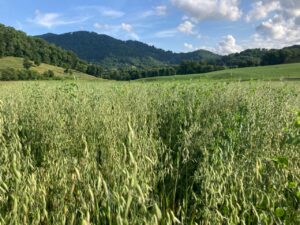
USDA Has Funds to Help Cover Organic Certification Costs
8/18/2021 – The USDA announced that they have funds available to help cover organic certification costs for organic farmers …


El inglés es el idioma de control de esta página. En la medida en que haya algún conflicto entre la traducción al inglés y la traducción, el inglés prevalece.
Al hacer clic en el enlace de traducción se activa un servicio de traducción gratuito para convertir la página al español. Al igual que con cualquier traducción por Internet, la conversión no es sensible al contexto y puede que no traduzca el texto en su significado original. NC State Extension no garantiza la exactitud del texto traducido. Por favor, tenga en cuenta que algunas aplicaciones y/o servicios pueden no funcionar como se espera cuando se traducen.
Inglês é o idioma de controle desta página. Na medida que haja algum conflito entre o texto original em Inglês e a tradução, o Inglês prevalece.
Ao clicar no link de tradução, um serviço gratuito de tradução será ativado para converter a página para o Português. Como em qualquer tradução pela internet, a conversão não é sensivel ao contexto e pode não ocorrer a tradução para o significado orginal. O serviço de Extensão da Carolina do Norte (NC State Extension) não garante a exatidão do texto traduzido. Por favor, observe que algumas funções ou serviços podem não funcionar como esperado após a tradução.
English is the controlling language of this page. To the extent there is any conflict between the English text and the translation, English controls.
Clicking on the translation link activates a free translation service to convert the page to Spanish. As with any Internet translation, the conversion is not context-sensitive and may not translate the text to its original meaning. NC State Extension does not guarantee the accuracy of the translated text. Please note that some applications and/or services may not function as expected when translated.
Collapse ▲
8/18/2021 – The USDA announced that they have funds available to help cover organic certification costs for organic farmers …
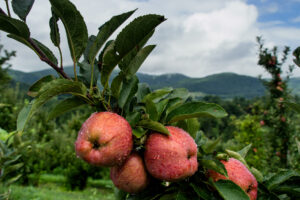
Brown Marmorated Stink Bug: First generation adult emergence is underway in all production areas, ranging from only about 10% …

Heavy Rains In the Coming Days *** Tropical Rains An Increasing Threat Southern Appalachians *** Heavy Rain Threat Could Extend in …
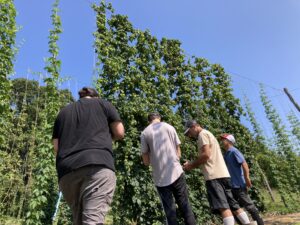
8/11/2021 – Yesterday nine brewers, representing Sideways Farm & Brewery, Burning Blush Brewery, and Wicked Weed Brewing with their …

Brown Marmorated Stink Bug: As shown in the chart below, emergence of first generation adults is well underway in …

Please expect an Apple Disease Update tomorrow, Aug. 11, 2021. I’ve had some inquiries regarding the length of time …

Grower Nicole Rosenberger has been growing beautiful sustainably grown cut flowers at Turtle Rock Gardens in Silk Hope for …

Bobby Ward, author of Chlorophyll in his Veins, J. C. Raulston Horticultural Ambassador, shares his insight into the life …

8/11/2021 – Update: Love social media! We got a bunch of applications within just a few days. Thanks. 8/7/2021 – …
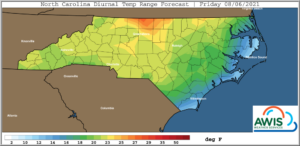
AWIS Weather Forecast 8/4/2021 As we come closer to harvest, weather forecasts become more important. In collaboration with AWIS Weather …
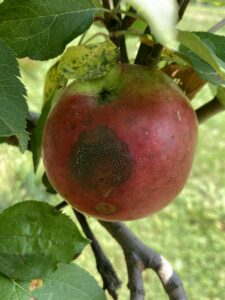
Although temperatures this week are predicted to be below average, I would encourage you to not let your guard …
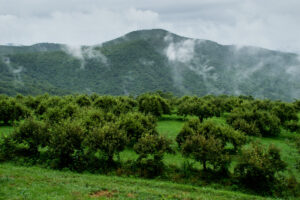
Codling Moth Threat Declines, Stink Bug Populations on the Rise Codling moth: Second generation flight of the codling moth is …
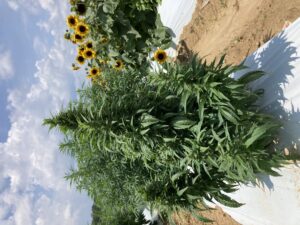
7/29/2021 – It is a very beautiful, but very hot day in western North Carolina. And research associate, Margaret …

Leaf defoliation on apple trees has begun in Western North Carolina, but unfortunately it’s not quite autumn. Rather, the …

Codling Moth and BMSB are Key Target Pests Codling moth: Degree-day accumulations range from about 1770 in Henderson County to …
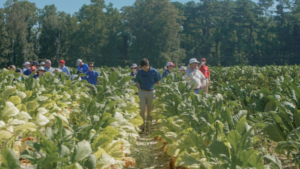
Please share across your networks. The NC State University Organic Working Group will be holding an Organic Commodities Field Day …

The new Produce Handling Facility was officially opened at the Mountain Horticultural Crops Research and Extension Center in Mills …

I visited In Good Heart Farm outside Pittsboro in mid-May and again in mid-July. Ben Shields and Patricia Parker …
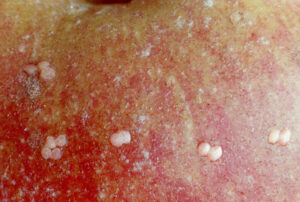
2nd Generation Codling Moth in Higher Elevations, BMSB in Lower Elevations Codling Moth: In higher elevation orchards such as Henderson …
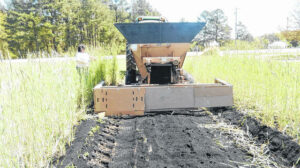
The biggest handicap to growing crops in the Sandhills is the sandy soil. Acidic and low in organic matter, …
This publication for homeowners and landscapers describes how to mow, fertilize, irrigate, and control weeds …

A muscadine virus survey was conducted in 2024 to assess the incidence of grapevine viruses …

This publication reports the results of an annual survey of sod growers in North Carolina …

Gummy stem blight is caused by several closely related fungal pathogens in the genus Stagonosporopsis …

This vegetable pathology factsheet describes the identification and treatment of anthracnose in cucurbits.

This factsheet summarizes the characteristics of bees and addresses how to control them as an …

This factsheet describes the symptoms of a shoot inhibitor herbicide injury.

This factsheet describes the symptoms of a metribuzin herbicide injury.